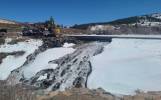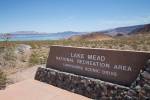U.S. recognizes spectacular scenery on Colorado River below Hoover Dam
If you have not yet done so, and should you have the chance, get a firsthand look at the Colorado River between Hoover Dam and Willow Beach. While it is impressive to look down upon the river from atop the dam, experiencing the river at surface level is even more remarkable. The view of the dam from that perspective isn’t half bad, either.
Perhaps that is why Secretary of the Interior Sally Jewell designated that stretch of water as part of Black Canyon Water Trail, one of 16 National Water Trails across the country and the first to be so designated in the Southwest. Though Black Canyon is the trail’s centerpiece, it actually stretches for 30 miles from Hoover Dam all the way to Eldorado Canyon, once a booming mining center.
“Rivers, lakes, and other waterways are the lifeblood of our communities, connecting us to our environment, our culture, our economy, and our way of life,” said then-Interior Secretary Ken Salazar when he unveiled the National Water Trails System in February 2012. The official news release announcing the system’s creation described the NWTS as “a new network that will increase access to water-based outdoor recreation, encourage community stewardship of local waterways, and promote tourism that fuels local economies across America.”
Whether such a designation actually increases access to water-based recreation remains to be seen, but Salazar’s statement about waterways connecting us to our environment, culture and way of life was spot on.
Though technically part of Lake Mohave, the waters immediately below Hoover Dam and from there south to a point where the canyon begins to widen is still commonly referred to as the Colorado River. Beginning at the dam, a trip down this section of the river is like boating your way through a living museum that highlights both the river’s import to the development of the Southwest and the region’s natural history. Along the way, you can see such historical features as ringbolt rapids, so named for the ringbolts fixed in rock faces that paddle boat captains once used to pull their vessels through the rapids at that location. The rapids were tamed when the dam was built, but the ringbolts are still there. This and other manmade features are a reminder of how rugged life along the river used to be.
Other man-made features include an old catwalk and gauging station while natural features include multiple hot springs, sandy beaches, Sauna Cave, Balanced Rock and wildlife such as desert bighorn sheep. There is also some good fishing to be had along the way.
There are two ways to access that portion of Black Canyon Water Trail that stretches from Hoover Dam south to the first takeout at Willow Beach, a distance of about 12 miles. One option is to put in with rafts or paddle craft just below the dam and travel downstream and the other is to travel upstream from Willow Beach. With either option there are restrictions you need to be aware of.
To launch at Hoover Dam you will need to go through a vendor who is permitted to escort visitors to the launch site because it falls within the dam’s security zone. Though trips are often guided, some vendors offer self-guided trips. From Willow Beach one can travel upstream to a designated point below the dam. Generally this is done with motorboats, but the adventurous can use paddle craft if they desire.
That portion of Black Canyon Water Trail that lies between Willow Beach and Hoover Dam is managed as a primitive zone where personal watercraft (PWC) and other motorized vessels are prohibited on Sunday and Monday year-round. Between Labor Day and the Friday of Memorial Day weekend, the offseason, the area is semi-primitive. While PWCs are still prohibited, boats with motors of 65 horsepower or less are permitted Tuesday through Saturday.
From Saturday of Memorial Day weekend to Labor Day, the busy season, there are no horsepower restrictions and PWCs are permitted Tuesday through Saturday. There are no restrictions from Willow Beach south.
Freelance writer Doug Nielsen is a conservation educator for the Nevada Department of Wildlife. His “In the Outdoors” column, published Thursday in the Las Vegas Review-Journal, is not affiliated with or endorsed by the NDOW. Any opinions he states in his column are his own. He can be reached at intheoutdoorslv@gmail.com.























